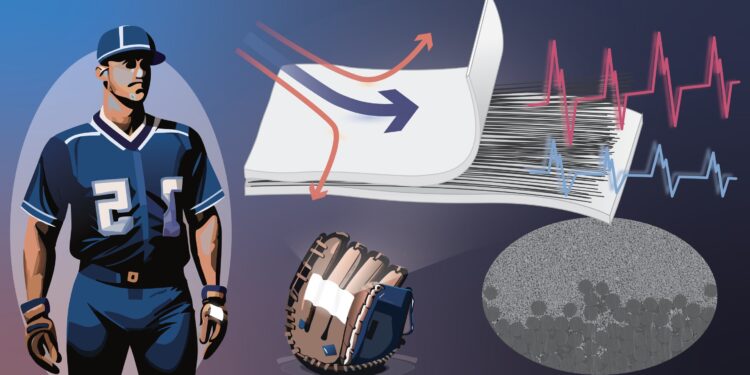The principle, structural design and application of unidirectional carbon fiber reinforced flexible piezoelectric nanocomposite materials. Credit: Tohoku University
An international research group has designed a new high-strength flexible device by combining piezoelectric composites with unidirectional carbon fiber (UDCF), an anisotropic material that provides strength only in the direction of the fibers. The new device transforms the kinetic energy of human movement into electricity, providing an efficient and reliable means for high-resistance, self-powered sensors.
Details of the group’s research have been published in the journal Little on December 14, 2023.
Motion diction involves the conversion of human movement energy into measurable electrical signals and is a crucial part of ensuring a sustainable future.
“Everyday objects, from protective equipment to sports equipment, are connected to the Internet as part of the Internet of Things (IoT), and many of them are equipped with sensors that collect data,” explains Fumio Narita , co-author of the study. and professor at the Graduate School of Environmental Studies at Tohoku University. “And effectively integrating these IoT devices into personal equipment requires innovative solutions in energy management and material design to ensure durability and flexibility.”
Mechanical energy can be used thanks to the ability of piezoelectric materials to generate electricity when physically stressed. Meanwhile, carbon fiber lends itself to applications in the aerospace and automotive industries, sports equipment and medical equipment due to its durability and lightweight nature.
“We wondered whether personal protective equipment, made flexible by a combination of carbon fiber and a piezoelectric composite, could provide comfort, more durability and sensing capabilities,” says Narita.
The group fabricated the device using a combination of unidirectional carbon fiber fabric (UDCF) and potassium sodium niobate (KNN) nanoparticles mixed with epoxy resin (EP). The UDCF served as both an electrode and a directional reinforcement.
The so-called UDCF/KNN-EP system met his expectations. Tests found that it could maintain high performance even after being stretched more than 1,000 times.
It has been proven to support a much higher load when pulled along the grain compared to other flexible materials. Additionally, when subjected to impacts and stretching perpendicular to the direction of the fibers, it outperforms other piezoelectric polymers in terms of power generation density.
The mechanical and piezoelectric responses of the UDCF/KNN-EP were analyzed using multi-scale simulations in collaboration with Professor Uetsuji’s group at Osaka Institute of Technology.
The UDCF/KNN-EP will help propel the development of flexible, self-powered IoT sensors, leading to advanced multifunctional IoT devices.
Narita and his colleagues are excited about their technological advancements.
“CF/KNN-EP was integrated into sports equipment and accurately detected the impact of catching a baseball and the frequency of a person’s steps. In our work, the high strength of CF has been exploited to improve the durability and reliability of battery-free sensors while maintaining their directional scalability and provides valuable insights and guidance for future research in the field of motion sensing.
More information:
Yaonan Yu et al, Fabrication, evaluation and multi-scale simulation of piezoelectric composites reinforced using unidirectional carbon fibers for flexible motion sensors, Little (2023). DOI: 10.1002/smll.202307689
Little
Provided by Tohoku University
Quote: Piezoelectric composites with carbon fibers for motion sensors (December 28, 2023) retrieved on December 28, 2023 from
This document is subject to copyright. Apart from fair use for private study or research purposes, no part may be reproduced without written permission. The content is provided for information only.



